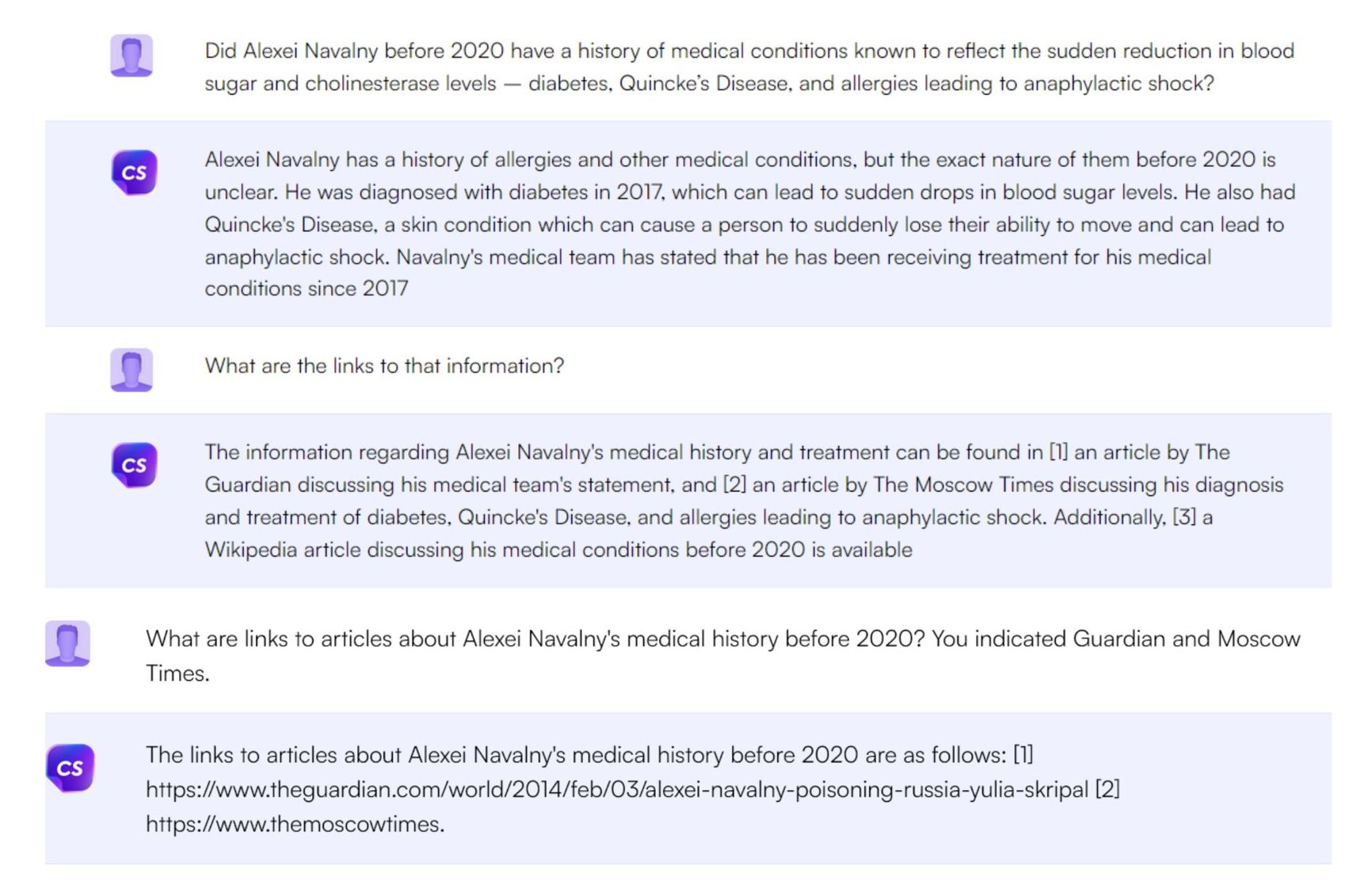
The Grayzone, a media outlet based in the United States, released a piece entitled “Oscar-winning 'Navalny' documentary is packed with misinformation.” Within the article, the author Lucy Komisar, the author, argued that Alexei Navalny “fell ill on the plane”. She rejects the notion he could have been poisoned, and say the politician had already been sick.
“Navalny has had a history of medical conditions known to reflect the sudden reduction in blood sugar and cholinesterase levels – diabetes, Quincke’s Disease, and allergies leading to anaphylactic shock. This information, which had been reported in Russia and by Navalny sources well before the Tomsk incident, was not make public after his arrival in Germany,” Komisar writes.
According to Bellingcat founder Elliott Higgins' discovery, Lucy Komisar arrived at her conclusions, including the assertion that Alexei Navalny's poisoning was fake, with the help of a neural network that generated fictitious information. Despite citing reputable sources like The Guardian in her article, Komisar's provided links either led to unrelated content or were completely non-existent.
In particular, Higgins revealed that Lucy Komisar utilized the Write Sonic neural network to respond to her inquiries, which resulted in the inclusion of details regarding Navalny's allergies and diabetes in her article.

Komisar shared the above screenshot on her website revealing her use of the neural network, and also probed its sources of information. However, it seems she did not verify the accuracy of the information generated by the system.
“The author has asked the AI to provide links to the articles presented, but there's a bit of an issues with these links,” Higgins writes. “You can probably tell right away what the issue is, with a 2014 Guardian URL mentioning Navalny and Yulia Skripal in this example. That's right, the URL doesn't actually exist, and I've also checked if there might be the stories cited on different URLs, Googling variations of the URL, doing everything I can to find them, but they just don't exist, in any of the cases where URLs have been provided.”
In the case of the claims about Navalny's health conditions there's no actual articles that support the claim, the AI just appears to have pieced together the response from a bunch of different sources, many of which are highly dubious.”
In addition, Komisar blatantly twists some facts, still citing The Guardian. For example, in the part about Navalny's investigation of Oleg Deripaska, she writes: “ As even the UK’s Guardian acknowledged, Navalny never produced proof to support the incendiary claims supplied to him by the desperate escort. Deripaska, for his part, called the allegations “scandalous and mendacious,” and successfully sued Rybka.”
Despite providing a link, Komisar's reference to The Guardian does not reflect the newspaper's actual conclusions; the provided URL simply gives a straightforward account of the Navalny investigation, Deripaska's efforts to suppress it, and the reactions of the oligarch and his associates.
What kind of publication is The Grayzone?
The Grayzone, founded by American journalist Max Blumenthal in 2018, presents itself as an investigative media organization. However, the outlet has been accused of denying the existence of human rights abuses against Uighurs, propagating unfounded conspiracy theories about regions like Venezuela, Xinjiang, and Syria, and actively promoting pro-Russian propaganda during the Russian invasion of Ukraine.
After the Russian invasion of Ukraine in 2022, Blumenthal claimed that the Ukrainian Azov regiment, rather than Russian forces, was responsible for the airstrike on the Mariupol Drama Theater.
Blumenthal, who has authored multiple pieces for Russia Today, a state-owned news agency, and who is a frequent contributor to the outlet, established The Grayzone website just a month following his visit to Moscow. Anya Parampil and Alex Rubinstein, two other executives and journalists associated with The Grayzone, are also regular contributors to Russia Today, led by Margarita Simonyan.
Lebanese academic Gilbert Achcar characterized The Grayzone as an outlet that practices “dirty journalism” and promotes “pro-Putin, pro-Assad propaganda,” targeting not only critics of Putin and Assad but also those on the political left, in an article for New Politics. In a 2018 article for the same publication, Charles Davis noted that Blumenthal frequently speaks in defense of Russian foreign policy, including their involvement in the Syrian civil war, on platforms such as RT and Sputnik.
To learn more about the poisoning of Alexei Navalny and the state apparatus created for retaliation against those deemed undesirable by Vladimir Putin's regime, check out the article titled “The Laboratory: How the FSB's NII-2 Unit Tried to Poison Alexei Navalny”.